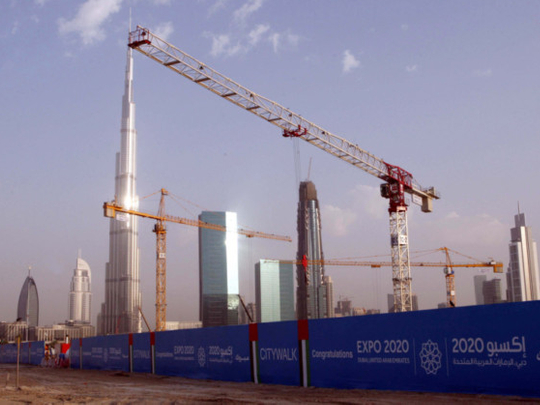
Dubai: The UAE economy grew 4.7 per cent in 20013, the highest since 2006 (9.9 per cent), supported by higher oil production and strong recovery in domestic demand. This growth trend is forecast to continue into 2014 supported by strong non-hydrocarbon growth, according to Institute of International Finance (IIF).
While the overall UAE economic growth (real GDP) is expected to moderate to 4.2 per cent this year due to a decline in oil revenues, the IIF economists have forecast a non-oil sector growth of 5.2 per cent. While Abu Dhabi’s economy is projected to grow 3.6 per cent this year, Dubai’s GDP is expected to grow in excess of 5 per cent.
“The completion of major infrastructure projects and the preparations to host the Expo 2020 should keep economic growth in Dubai above 5 per cent in the coming years. In the context of moderating growth rates in emerging economies and relatively slow growth in the developed economies, the UAE growth rate ranks among the most robust around the world,” said Garbis Iradian, Deputy Director of IIF, Africa/Middle East.
Leading financial indicators such as equity market valuations, real estate prices, business confidence index and the evolution of credit default swaps (CDS) point towards strong non-oil sector growth.
Dubai’s sovereign CDS spreads declined from 226 basis points (bps) in 2012 to 181 at the close of the first quarter of this year indicating improved market confidence in government debt and creditworthiness of government related entities (GREs).
“The factors driving the economic growth and asset prices this time are different,” said Iradian. While the last boom was driven by asset bubbles, which boosted excessive credit growth, this time around credit growth is reined in by macro-prudential measures such as regulatory limits on loans to GREs and property investors based on strict loan-to-value ratios. The IIF expects loan growth to moderate to 10 per cent this year from 13 per cent last year due to the new regulations.
While Dubai’s $20 billion debt refinancing agreement with the Central Bank of the UAE and the Government of Abu Dhabi has eased the debt servicing burden, the IIF has cautioned Dubai against further build-up in public debt.
“Dubai’s debt is estimated at $130 billion or 132 per cent of its GDP, while the refinancing agreement has postponed the obligations by another five years, the government should exercise fiscal prudence. The recovery in asset prices combined with strong underlying growth makes the debt manageable, if there is no further accumulation,” said George T. Abed, Senior Counsellor and Director IIF, Africa/Middle East.












